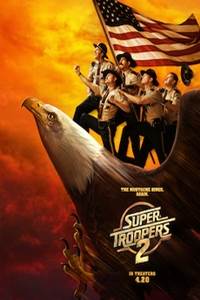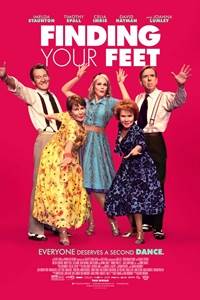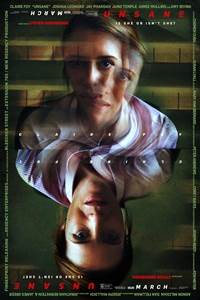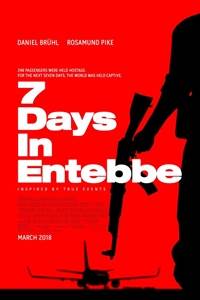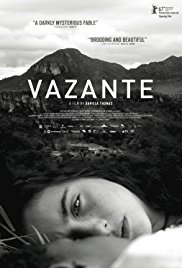Interview with the “Super Troopers 2” cast
Your five favorite Vermont Highway Patrol officers are back! Yes, Thorny (Jay Chandrasekhar), Mac (Steve Lemme), Foster (Paul Soter), Rabbit (Erik Stolhanske), and Farva (Kevin Heffernan) return to the big screen in “Super Troopers 2”, the sequel to the 2001 cult comedy hit.
In this film, Governor Jessman (Lynda Carter) pulls the guys out of their “forced retirement” to help manage a border dispute between Vermont and the Province of Quebec, and they inevitably clash with three Canadian Mounties.
The Troopers stopped in the Valley for a “Super Troopers 2” screening, and the next day Lemme, Soter, Stolhanske, and Heffernan sat down with the Phoenix Film Festival and two other movie critics for a fun and lively group interview.
These personable comedians – who met in college and formed the Broken Lizard comedy troupe - talked about American/Canadian banter, wanting to make a great sequel, their writing process, and Heffernan’s law degree. Yes, the man who plays Farva is a lawyer!
“Super Troopers 2” also stars Brian Cox, Will Sasso, Emmanuelle Chriqui, and Rob Lowe, and the film arrives in theatres on Friday, April 20.
Q: Do you believe that “Super Troopers” fans have a stake in wanting the sequel to be great?
KH: There’s a lot of pressure. Are people going to like this movie or not? There are so many fans of the first one, (they don’t want us) to screw it up. It’s like a wedding toast situation. They want you to succeed. They are on your side. They are like family, so we can (put ourselves out there) and hopefully not screw it up.
PS: Our fans have never been shy about saying what they feel. We’ve shown (this) movie a few times, and people are so positive, so I really believe that they (are/will be) satisfied.
SL: You feel a sense of relief. (Our fans) say this across the board: “I just didn’t want it to suck.” Thankfully, it doesn’t. A lot of people are saying that it’s as good as the first one, maybe better.
PS: Certainly, we spent a lot of time on both scripts, but what I like here is we spent more time thinking about what makes a good story. You look at the first (film), and I think that we all admit, it was an excuse (to create) set piece after set piece, but we really wanted (the sequel) to be an interesting story. We have this cool hook about a chunk of Canada (involved in a border dispute).
SL: Let’s face it, we made a great movie!
Q: Canadian culture is a predominant topic in the film. Did you research what it means to be Canadian?
KH: There are times we’d go (to Canada) to have fun, like Montreal for the Just for Laughs Festival and (observe) the funny (cultural) elements. French Canadians don’t want to speak English to you. There are (others) who are gruff, and you think of Canadians as nice people. So, we thought it would be a cool area to (explore) and have some fun.
SL: Plus, (The U.S. and Canada) are neighbors, and we know nothing about each other, truthfully. We were in Calgary and met a Canadian guy. We asked him, “How many states do we have, and he responded, ‘I don’t know, 48?’”
We thought, “That’s a ridiculous answer, and he asked, ‘How many provinces are in Canada?’”
I said, “I don’t know. What’s a province?”
In the movie, we are the ones who come over the border and make fun of them, but (the script) gets flipped immediately, and we become the bad guys. Our philosophy is (to) never be mean-spirited. So, we joke about how silly Canada is, but we set ourselves up intentionally to have Canadians smear us all over the place.
Q: What do you enjoy about playing these characters?
KH: A lot of our (work) is based on being friends first. (Our) philosophy is: we are going to (tap into) this world, and you (will) hang out and be happy. We’re having a good time and so (will you).
SL: We’ll write a scene where (our characters) are joking around and having fun with each other, and then there’s the one assh*le who everybody has in their workplace. (The person who will) ruin everyone’s time. That’s this guy (Steve points to Kevin). So, (if we have) any obnoxious, non-PC lines, we just pop them into Farva’s mouth.
KH: But you still like me!
SL: But we still like you.
PS: You’re loveable.
SL: And now we (also) have a French-Canadian version of Farva! (Paul Walter Hauser - who played Shawn Eckardt in “I, Tonya” (2017) - appears in “Super Trooper 2”.)
KH: I did a live comedy show with (Paul), and we were trying to cast a Canadian Farva. (Paul) is fantastic and (put him in contact) with our casting director. We did “Super Troopers 2”, and then “I, Tonya” was casting their movie. We had the same casting director, and he got the part!
Q: So, Rabbit gets a love interest in “Super Troopers 2”.
ES: It’s about time, right?
Q: Did you all draw straws to determine who gets a movie-girlfriend?
ES: No, I demanded it!
SL: You know, when we made our first movie, all of the guys wanted to do a love scene. Now, it’s the last thing that I want to do.
Q: Is there a girl out there for Farva?
KH: I don’t know, we talked about that. Maybe in “Super Troopers 3”, Farva finds love. In this movie, I locked lips with Lemme, so I’ll stay with Mac.
PS: If you are going to (be) romantic, sure, why not with a guy who you know?
Q: How does the writing process work? How do you bring it all together?
PS: In “Super Troopers 2”, the world was already built. In every phase of the writing, (we) are always throwing out bits or comedy that (are kept) off to the side. When we build the structure of the storytelling, then we (add) as much comedy as we can.
SL: The French-Canadian Farva is a good example. He first existed in dialogue, but we wanted to actually see this guy, (so) we wrote him into one scene. We loved (Paul’s) audition tape so much, we (thought that) American Farva and Canadian Farva should (also) meet up at some point. Each draft, you come up with three, five, ten new jokes that make the script better.
ES: You have to form an alliance, because you (need) “three of the five” on your side to get a joke approved. Sometimes, you have to act it out. If you are really passionate about a joke, you have to (perform it) and sell it.
PS: You can also sabotage a joke, by reading it in a sh*tty voice.
(Paul then recites a line in a whinny voice for us.)
Then the (writer) will say, “Well, when you read it like that, Assh*le, of course it’s not funny.”
ES: That’s the best way to sabotage!
SL: When you get into these creative disputes, you (sometimes) just want to win a fight. (Two guys) get (their) heels dug in and go toe-to-toe, while the (other) three will just sit back, watch and smirk.
PS: There’s nothing more fun than watching two guys fight (over a bit). You don’t want to get involved. Just sit back and eat popcorn.
Q: Now, Kevin, you have a law degree and passed the bar in two states.
KH: I did! Yea, two states.
Q: If you pursued a legal career full-time and never joined Broken Lizard, how would you feel about watching the other guys in these movies?
KH: I’d feel like they needed a Farva!
PS: Everybody needs a Farva!
Q: Did you guys think about other careers before joining Broken Lizard?
SL: I don’t know what else I’d do. I had a desk job for one month.
ES: I’m not qualified for anything else.
PH: You guys could come work for me at the law firm, if you want. Make some copies!
Jeff – a member of the Phoenix Critics Circle – has penned film reviews since 2008 and graduated from ASU’s Walter Cronkite School of Journalism. Follow Jeff and the Phoenix Film Festival on Twitter @MitchFilmCritic and @PhoenixFilmFest, respectively.


